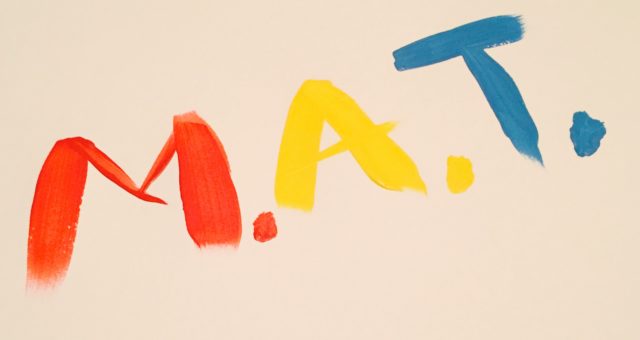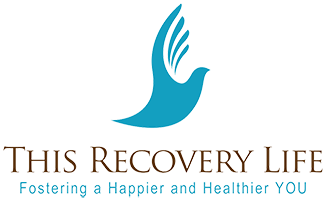
The Truth About Medication Assisted Treatment
There are a few medications that can assist people with their recovery from substance misuse that are exceedingly available today.
Alcohol and opiates/opioids are the two primary substances that can be addressed with medication. Nicotine is also a common substance that is widely known for its replacement therapies.
It is not uncommon for drugs to be used to “ease” the withdrawal of alcohol and opiates while a person is in detox. For alcohol, a benzodiazepine called Librium is administered and in the case of opioids, clonidine, which can also be habit forming, is commonly used as well. It is also a common experience for people withdrawing from or recently out of detox to have issues with sleep, so a variety of psychotropic medications are used to potentially treat such symptoms as well.
Once detox is complete, the medications are tapered and the individual is usually referred to another program of recovery. Depending on the individual’s situation, this may be either inpatient, outpatient, therapy, support groups, etc.
From this point on, it is greatly possible that individuals can continue their recovery without the use of medications. Adequate support and guidance in building up recovery capital can be key.
For others, additional treatment involving medication assisted treatment is crucial.
There are experiences of extreme craving and mental disarray that can be relieved by participating in a program using addiction medicine.
Methadone, buprenorphine, and naltrexone are commonly used for opposites/opioids.
When used as prescribed along with adequate support from talk therapies as well as peer groups, these medications can can be extremely effective in supporting one’s recovery. The medication to assist in the temporary prevention of death from overdose is naloxone.
For alcohol, the medications are acamprosate, naltrexone and disulfiram. There is much information on the web about all of these medications and their different manufacturers. SAMHSA put out a great informational bulletin on these medications a few years ago.
There’s a catch though. As I mentioned before, for the most part, these medications are meant to be temporary. Anywhere from a few months to a year or two. This of course entails the fashioning of a plan with therapists, counselors and a doctor in order to have the best possible outcomes.
Not everyone who goes to detox is quite ready to jump into a life of recovery and once prescribed medications, they can also be misused when their protocols are not followed:
- Methadone is often referred to as “liquid handcuffs”. It’s protocol is cumbersome due to the daily visits to the clinic to obtain the medication, aka “dose”. It works well, but more often than not, people are on it for prolonged periods of time, often years. If alcohol is drunk with it or benzodiazepines are taken, a “high” as well as other side effects can be achieved and the medication now is non productive. Also, long term methadone is known to deteriorate organs such as the liver. Additional complications come to light with co occurring physical and/ or mental conditions as well.
- Buprenorphine can also easily be misused. Drinking alcohol or taking benzodiazepines with it also creates a high effect. This can easily lead to accidental death. Buprenorphine can be habit forming as well. It has a high street value and is often diverted which can be lucrative and lead patients to return back to opiate/opioid use. In some states, patients are drug tested to ensure they’re following protocol, which then leads to other creative ways of obtaining a “high”. Side effects can be expected as well. Years ago, I had a recoveree that was chewing on Fentanyl pads whose high opioid concentration broke through the Buprenorphine block since he had to test positive for the buprenorphine in order to obtain the medication.
- Naltrexone is not as popular for the treatment of opiates/opioids, but it is for alcohol. The thing is that it has to be taken daily. It is not uncommon for patients to not take it if they want to drink. There is a long lasting (30 day) version which is injectable. It comes in the form of a shot that is administered monthly by a physician. There may be side effects caused by the medication or the injection, so it may not be suitable for everyone. This is not habit forming.
- On the other side of this, there are the agencies, treatment centers and doctors that benefit from keeping individuals on the medications, substituting ethics in favor of financial gains. Practices like increasing dosage, being punitive to patients after “setbacks”, not providing adequate support or not encouraging other options make it challenging for individuals to maintain their plans of limiting their time on MAT. Unfortunately, situations like these can keep people going through the “revolving doors” of the system, discouraging many from recovery and ultimately losing others along the way.
I like to think of Medication Assisted Treatment as if it were the nicotine patch. If you’re serious about stopping smoking and the nicotine patch is the pathway you choose to do so, then I would hope you have a plan in place. Ie: So you wear your 21mg patch and you are addressing your smoking triggers. You’re making the necessary changes and are putting some new coping strategies in place. You make it through a few weeks (or whatever time span you planned for) and now you move on (taper) to the 14 mg patch. You continue practicing your new behaviors and attitudes while obtaining some kind of support from your peers, friends, family, etc. Then you move on to the 7 mg patch… By the time you’ve completed your plan, you have a whole new set of habits, have obtained various gains (accumulated funds not spent on tobacco products, better health, hygiene, fresher taste buds, etc..), new perspectives, a positive outlook on life, new ways to address the challenges life presents, etc. Smoking is the last thing you want to do and are in disbelief you even did so for however long you did.
On the other hand, you can not wear the patch one day and have a cigarette. This of course is counterproductive and a setback. You might not have been ready to stop. You might have tried to stop for someone else. You might not have obtained the support necessary to guide you through more challenging times. The list goes on and on. This is just one example of what may transpire.
The government is now extremely supportive of Medication Assisted Treatment due to the “Opioid Epidemic”. This is a good thing. I’ve worked with individuals who were adamantly against MAT and then had a sibling pass away due to an overdose. Now their whole perspective has changed stating that they only wished their loved one was on MAT when they had the chance.
If you chose the pathway of Medication Assisted Treatment, I applaud you. I personally feel that ANY pathway of recovery is a step in the right direction. Recovery is not a linear thing. You might begin on one pathway and then realize that you may need to add additional pathways or change your pathways completely. You are the only one that can decide what is best for you. The key is to work with someone (usually a team involving the doctor, therapist, counselor, recovery coach or whatever combination..) that can guide you in building a plan while being connected with the proper supports to walk alongside you as it is implemented.
MAT can save lives if implemented correctly. If you or someone you love can identify, please feel free to share the article, leave a comment below and like us on fb. Love Life Today. THiS ReCoVeRY LiFE.

Recent Comments